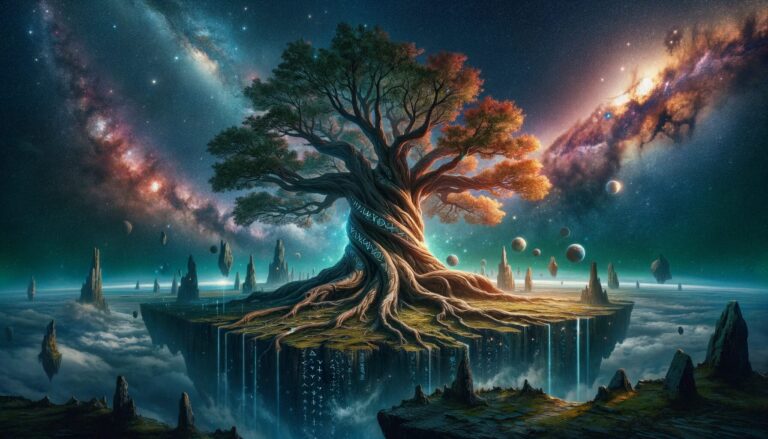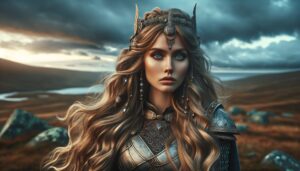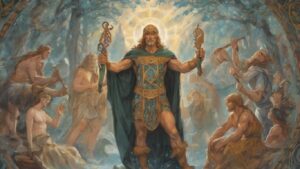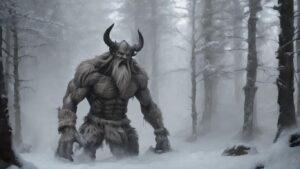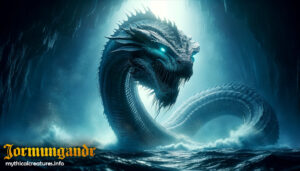Table of Contents
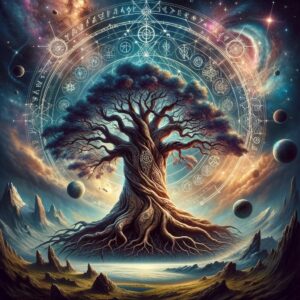
Yggdrasil, the World Tree, symbolizes interconnectedness in Norse mythology, linking gods, giants, and men across the cosmos.
Origins
Yggdrasil’s origins trace back to the earliest annals of Norse mythology. Its name, often translated as “Odin’s Horse” or “Ygg’s Horse,” alludes to its close association with the Allfather, Odin. While its etymology remains somewhat shrouded in mystery, its significance in the Norse cosmos is crystal clear.
This colossal tree is not merely a botanical wonder; it is a living embodiment of the interconnectedness and cyclical nature of life, death, and destiny. Yggdrasil’s roots delve deep into the wells of fate, nurturing the very essence of existence.
Description and Symbolism
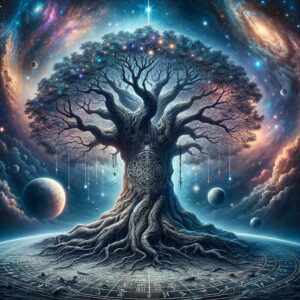
Picture in your mind a tree of immense proportions, towering above the realms it connects. Its roots extend deep into three significant wells: Urdarbrunnr (Well of Destiny), Mímir’s Well, and Hvergelmir (Roaring Cauldron). Each of these wells holds a vital role in the Norse cosmogony.
Urdarbrunnr, the Well of Destiny, is the source of the Norns’ power, the three sisters who weave the threads of fate. They shape the past, present, and future of all beings, immortal and mortal alike.
Mímir’s Well, a fathomless abyss of wisdom, grants insight and guidance to those who seek it. Mímir, a wise and enigmatic being, guards this well and imparts his knowledge to the worthy.
Hvergelmir, the Roaring Cauldron, is a turbulent and tumultuous well, the source of countless rivers that flow through the nine worlds. It is a place of primordial power, churning with the raw forces of creation.
Yggdrasil’s trunk soars high, bridging the gap between the heavens and the earthly realms. It cradles the home of the gods, Asgard, in its upper branches. These heavenly abodes include Valhalla, the hall of heroes, and the celestial palace of Odin himself.
Midgard, the world of men, rests upon Yggdrasil’s middle branches, signifying the vital connection between humanity and the divine. At the base of the tree lies the realm of the giants, Jotunheim, underscoring the precarious balance between order and chaos.
Accessibility and Visitors
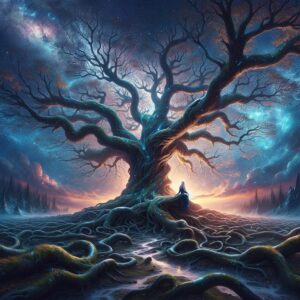
Yggdrasil, the mythical World Tree, is not just a passive structure in Norse mythology but a living, bustling ecosystem in itself. While it is not typically associated with mythical creatures in the same way as other realms, it does host several significant beings:
Ratatoskr: A mischievous squirrel, Ratatoskr, scurries up and down Yggdrasil’s trunk, serving as a messenger. It relays messages and sometimes even stirs up conflicts between the eagle at the top of the tree and the serpent at the roots.
Eagle and Serpent: These two creatures reside at opposite ends of Yggdrasil. The unnamed eagle perches on the highest branches, while Nidhogg, a malevolent serpent, gnaws at the roots. They symbolize the cosmic balance between order and chaos, with the eagle representing the heavens and the serpent the underworld.
Dvergar (Dwarves): Although not residing within Yggdrasil itself, the Dwarves are closely associated with the roots of the World Tree. They are known for their incredible craftsmanship and are responsible for fashioning many of the treasures and magical items in Norse mythology.
Nine Worlds: Yggdrasil’s branches connect the nine worlds, each inhabited by a myriad of beings. These realms are home to gods, giants, elves, dwarves, and various other mythical creatures. While Yggdrasil is not their dwelling place, it serves as a means of interconnection between these diverse realms.
Humans: Yggdrasil’s middle branches associate humans with Midgard, the realm of humanity, highlighting the World Tree’s role in connecting all beings and realms.
Myths and Stories
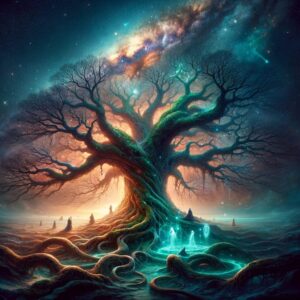
Odin’s Sacrifice for Wisdom and Runes
In Norse mythology, Odin’s self-sacrifice on Yggdrasil’s branches is a legendary tale that reveals the depths of his commitment to acquiring knowledge and power. Known as the “Hanging of Odin” or the “Odinic Sacrifice,” this act of extreme devotion holds profound significance.
Odin’s motivation for this harrowing act was his insatiable thirst for wisdom and a desire to unlock the secrets of the cosmos. He sought to gain insight into the mysteries of existence, foresee his own fate, and attain the knowledge of the runes, the ancient symbols that held the essence of creation and magic. In his relentless pursuit of wisdom, Odin was willing to make the ultimate sacrifice.
Odin hung himself from the branches of Yggdrasil, the World Tree, for nine days and nights. During this excruciating ordeal, he was pierced by his own spear, Gungnir. This act symbolized his complete surrender to the quest for knowledge, as he gave up sustenance and comfort for the sake of his pursuit.
Despite the agony and suffering he endured, Odin did not die during his hanging on Yggdrasil. Instead, he achieved his goal of gaining profound insight. It was during this time that the runes revealed themselves to him, their secrets unveiled as he grasped the very fabric of reality. Odin emerged from this ordeal with newfound wisdom and power, forever altered by his sacrifice.
Odin’s sacrifice and the subsequent acquisition of knowledge are integral aspects of his character in Norse mythology. This legend illustrates the lengths to which the Allfather was willing to go to obtain wisdom, reinforcing his role as a central figure in the Norse pantheon and a symbol of the pursuit of knowledge and power.
Yggdrasil’s Resilience During Ragnarok
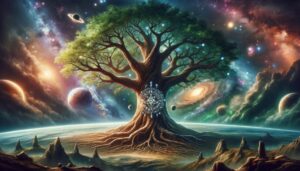
During Ragnarok, the prophesied final battle in Norse mythology, Yggdrasil, the World Tree, undergoes dramatic upheaval. As the cosmic conflict unfolds, Yggdrasil shudders and quakes under the immense strain of the cataclysmic event. Its branches and roots bear the brunt of the turmoil, enduring the chaos that engulfs the nine worlds.
Amidst this turmoil, the Norns, the weavers of fate, continue their ceaseless labor at the Well of Destiny, Urdarbrunnr, located at Yggdrasil’s roots. They are unwavering in their dedication to maintaining the threads of destiny, even as the world faces its ultimate reckoning.
Despite the impending doom and devastation, Yggdrasil embodies a profound symbol of endurance and the potential for renewal. It stands as a testament to the cyclical nature of existence, suggesting that even in the face of destruction, there is the promise of rebirth and the emergence of a new cosmic order.
Throughout the tumultuous events of Ragnarok, Yggdrasil remains a steadfast and resilient presence, a beacon of hope in a world consumed by chaos, reminding all beings of the eternal cycle of creation and destruction that defines the Norse cosmos.
Cultural Impact
Yggdrasil’s influence extends far beyond the realm of mythology. It has left an indelible mark on Scandinavian culture, becoming a symbol of interconnectedness, wisdom, and the cyclical nature of life. The image of Yggdrasil can be found in various forms of art, literature, and even modern pop culture.
Furthermore, the concept of Yggdrasil serves as a profound metaphor for the human experience. It reminds us that all aspects of existence are interconnected and that our actions ripple through the tapestry of life, affecting both the present and the future.
FAQ
What does Yggdrasil symbolize?
Yggdrasil symbolizes interconnectedness, the cosmos, and the cyclical nature of existence in Norse cosmology.
Where is Yggdrasil located?
Yggdrasil exists as a metaphysical and spiritual entity, interwoven with the fabric of reality, connecting multiple realms.
Who dwells in Yggdrasil?
While Yggdrasil isn't a dwelling place, beings like the squirrel Ratatoskr, eagle, serpent, and Dwarves are associated with it.
How can one access Yggdrasil?
Yggdrasil can be accessed through the realms it connects, with knowledge or divine guidance enabling navigation of its branches.
What is the significance of Yggdrasil in Norse mythology?
Yggdrasil represents the central axis of the cosmos, emphasizing interconnectedness and the cycles of creation and destruction.
Is Yggdrasil mentioned in other mythologies?
Yggdrasil is specific to Norse mythology and doesn't have direct equivalents in other mythological traditions.
How does Yggdrasil relate to Ragnarok?
Yggdrasil plays a central role in Ragnarok, shuddering under the immense strain of the cosmic conflict but symbolizing endurance and renewal.
What is the most famous story or myth involving Yggdrasil?
One of the most famous stories is Odin's self-sacrifice on Yggdrasil to gain wisdom and knowledge of the runes.
